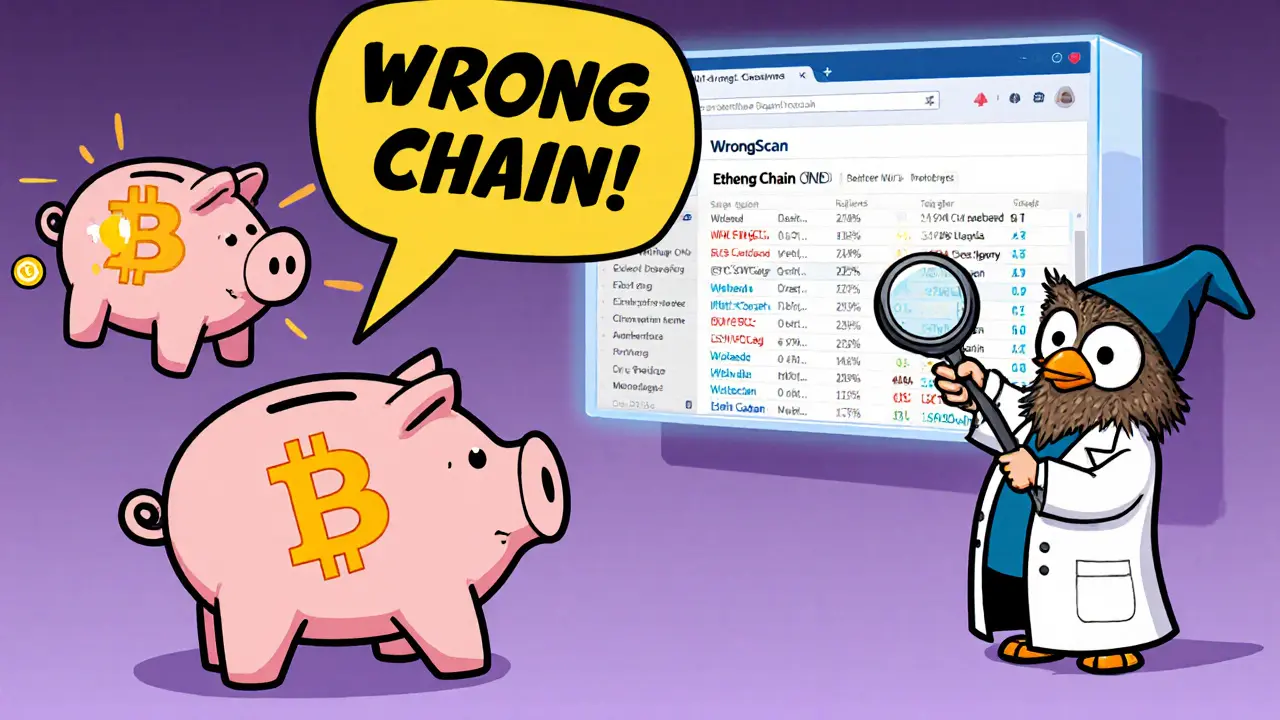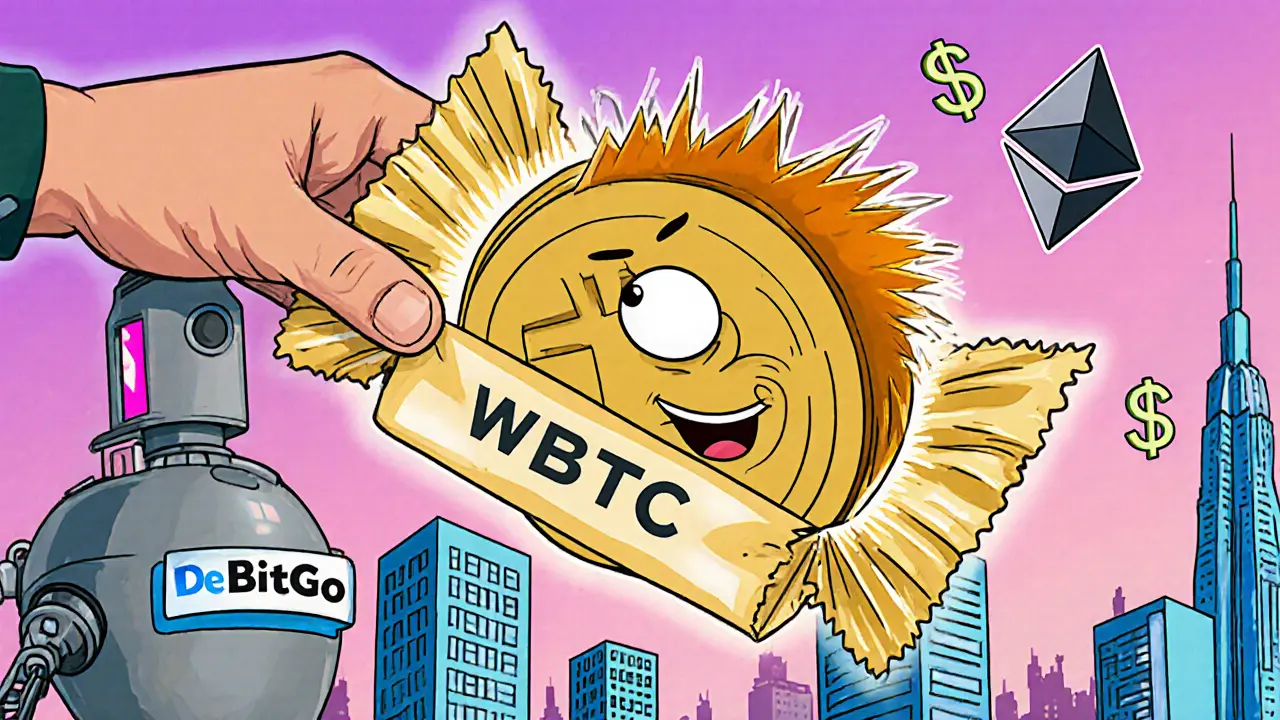Ethereum Gas Fee Estimator for Wrapping/Unwrapping
Calculate Your Gas Fees
Gas fees fluctuate based on Ethereum network congestion. Current estimates range from $1.25 to $4.00. Always ensure you have sufficient ETH in your wallet to cover the transaction. Check current gas prices
What Exactly Is Wrapping Cryptocurrency?
Wrapping cryptocurrency isn’t about putting a gift bow on your Bitcoin. It’s a technical trick that lets one blockchain use assets from another. For example, Bitcoin (BTC) lives on its own network. But if you want to use it in Ethereum-based DeFi apps like Aave or Uniswap, you can’t just send BTC there-it won’t work. That’s where wrapped cryptocurrency comes in. A wrapped token, like WBTC (Wrapped Bitcoin), is a digital copy of your original asset that’s been converted to work on a different blockchain. Every WBTC is backed 1:1 by actual Bitcoin locked in reserve. When you unwrap it, you get your original BTC back.
Why Do People Wrap Crypto at All?
Think of wrapped tokens as bridges. Without them, Bitcoin holders are stuck outside Ethereum’s $54 billion DeFi ecosystem. But with WBTC, you can lend your Bitcoin, earn interest, or trade it on DEXs-all without selling it. The same goes for Wrapped Ethereum (wETH). Even though ETH is Ethereum’s native coin, most DeFi apps don’t accept it directly because it doesn’t follow the ERC-20 standard. So you wrap it into wETH, and suddenly you can interact with every smart contract on Ethereum. This isn’t just convenience-it’s necessity for anyone wanting to use crypto across chains.
How Wrapping Works: The Step-by-Step Process
Wrapping crypto isn’t magic. It’s a five-step process:
- You send your original crypto (say, 1 BTC) to a trusted merchant like Coinbase, Kyber, or Aave.
- The merchant sends your BTC to a custodian-this could be a company like BitGo or a smart contract.
- The custodian locks your BTC in a secure wallet and mints an equal amount of WBTC on Ethereum.
- The WBTC is sent back to the merchant, who delivers it to your wallet.
- You now have WBTC that behaves like a regular ERC-20 token on Ethereum.
This whole process usually takes 15 to 30 minutes. Gas fees on Ethereum average between $1.25 and $3.50 per wrap, depending on network traffic. You’ll see the WBTC appear in your MetaMask wallet, and it’ll show up as a token you can trade, stake, or lend.
Unwrapping: Turning Wrapped Tokens Back Into Real Crypto
Unwrapping is the reverse. You want your original BTC back? Here’s how:
- You send your WBTC to a merchant that supports unwrapping.
- The merchant forwards it to the custodian (BitGo, in WBTC’s case).
- The custodian burns the WBTC-this means it’s permanently destroyed on the Ethereum chain.
- Once burned, the custodian releases the original BTC from its reserve.
- The BTC is sent back to your wallet.
Unwrapping often takes longer-25 to 45 minutes-because custodians need extra time to verify the request and trigger the release. Some users report delays of 3 to 7 days if the custodian is backed up or if there’s a manual review. That’s why it’s smart to plan ahead if you’re unwrapping to pay taxes or make a withdrawal.

WBTC vs. wETH vs. renBTC: Key Differences
Not all wrapped tokens are built the same. Here’s how the top three compare:
| Token | Underlying Asset | Custody Model | Market Share (Q3 2023) | Key Advantage | Key Risk |
|---|---|---|---|---|---|
| WBTC | Bitcoin | Centralized (BitGo) | 92.7% | High liquidity, widely supported | Single custodian failure could impact $5.2B |
| wETH | Ethereum | Decentralized (Smart Contract) | 100% of wrapped ETH | No custodian, fully trustless | Only needed because ETH isn’t ERC-20 |
| renBTC | Bitcoin | Decentralized (Darknodes) | 4.2% | No single point of failure | Limited adoption, lower liquidity |
WBTC dominates because it’s the most liquid and supported by major DeFi platforms. wETH is essential for Ethereum users-it’s not optional if you’re doing DeFi. renBTC offers decentralization but is fading in popularity. Most retail users stick with WBTC and wETH because they’re easy to access and widely trusted.
Real Risks: Custodians, Scams, and Lost Funds
Wrapping isn’t risk-free. The biggest danger is centralized custodians. WBTC relies entirely on BitGo. If BitGo gets hacked, freezes funds, or goes offline, your WBTC becomes worthless. That’s not theoretical-in July 2023, the Multichain bridge hack stole $32 million from wrapped assets. Even worse, 5 out of 12 major wrapped token projects lack transparent reserve proofs, meaning you can’t verify if your tokens are actually backed.
Another risk? Sending wrapped tokens to the wrong wallet. One Reddit user lost $12,000 in WBTC by sending it to a Bitcoin address. Wrapped tokens only work on the blockchain they were created for. WBTC lives on Ethereum-you can’t send it to a BTC wallet. Always double-check the token contract. Use Etherscan to verify you’re interacting with the official WBTC contract (0x2260fac5e5542a773aa44fbcfedf7c193bc2c599). Fake contracts are common, and 95% of scams come from them.
Tax Implications: You Might Owe Money
Wrapping or unwrapping crypto isn’t just a technical move-it’s a taxable event. The Australian Taxation Office (ATO) and other agencies treat it like a trade. If you wrap 1 BTC worth $165,000 into WBTC worth $180,000, you’ve triggered a $15,000 capital gain. Even if you didn’t cash out, the IRS and similar bodies will expect you to report it. Keep records of the market value at the time of wrapping and unwrapping. Failing to do so could land you with penalties later.

Who Uses Wrapped Tokens? Retail vs. Institutions
Most retail users wrap crypto for yield farming-earning interest on DeFi platforms. Over 63% of wrapped token users are doing this, according to DappRadar. But institutions are the real power users. BlackRock deployed $250 million in WBTC into Aave’s lending protocol in 2023. Fidelity has filed patents for institutional wrapped asset tools. They’re not just trading-they’re building infrastructure. That’s why WBTC remains dominant: it’s the only wrapped asset trusted enough by big players to move billions of dollars.
What’s Next? The Future of Wrapped Tokens
The future is shifting. In September 2023, the WBTC DAO approved adding Fireblocks and Copper as co-custodians alongside BitGo-reducing single-point risk. Ethereum’s core team is also exploring a protocol upgrade that would let ETH act like a regular token, making wETH obsolete. Meanwhile, new trust-minimized protocols using zero-knowledge proofs are emerging, promising full decentralization without custodians.
But here’s the catch: even if better tech arrives, wrapped tokens won’t vanish overnight. They’re deeply embedded in DeFi. Over $14.3 billion in assets are locked in wrapped tokens, and 82% of institutional activity uses them. Experts like Consensys say they’re a temporary bridge. Others, like Electric Capital, argue they’ll stay essential because liquidity is sticky. For now, they’re here to stay.
Getting Started: What You Need to Know
If you’re new to wrapping:
- Start with Coinbase or MetaMask-they make wrapping WBTC or wETH as easy as clicking a button.
- Always use official merchants. WBTC’s DAO lists 23 approved partners. Stick to those.
- Check gas fees before wrapping. Use GasNow to find low-fee windows.
- Never send wrapped tokens to a non-Ethereum wallet.
- Verify the token contract on Etherscan before any transaction.
For advanced users: If you’re interacting directly with smart contracts, study Solidity basics and test on a public testnet first. One wrong transaction can cost you thousands.
Common Problems and How to Fix Them
Here’s what goes wrong-and how to fix it:
- Transaction fails → You didn’t have enough ETH for gas. Always leave a buffer.
- WBTC price doesn’t match BTC → Temporary. During volatility, deviations up to 1.2% happen. Wait for the market to settle.
- Unwrapping takes days → Contact the custodian’s support team. BitGo’s team usually responds within 48 hours.
- Lost tokens → If you sent them to the wrong chain, recovery is nearly impossible. Prevention is your only defense.
Most issues come from rushing. Take your time. Double-check. Read the docs. WBTC and wETH are simple to use-but only if you treat them with care.
Is wrapping crypto the same as staking?
No. Staking means locking your crypto to support a blockchain’s security and earn rewards. Wrapping converts your asset into a different format to work on another chain. You can stake wrapped tokens, but wrapping itself doesn’t earn interest.
Can I wrap any cryptocurrency?
Not all. Only assets with official wrapped versions exist. Currently, WBTC and wETH are the most common. Others include Wrapped Litecoin (wLTC), Wrapped Solana (wSOL), and Wrapped BNB. Always check if a wrapped version is officially supported before proceeding.
Do I need to pay gas fees to unwrap crypto?
Yes. Unwrapping requires a transaction on the blockchain where the wrapped token lives (like Ethereum). That means paying gas fees, usually between $1.50 and $4.00. You also need ETH in your wallet to cover the cost.
Are wrapped tokens safe?
They’re safe if you use trusted platforms and verify contracts. WBTC and wETH have strong track records. But they carry custodial risk-especially WBTC, which relies on one company. Always check if the project publishes real-time reserve proofs. Avoid unknown wrapped tokens with no transparency.
What happens if the custodian goes bankrupt?
If the custodian (like BitGo) fails and can’t prove they hold the backing assets, your wrapped tokens could become worthless. That’s why transparency matters. WBTC allows on-chain reserve checks-so you can verify that every WBTC is backed. Never use a wrapped token without this feature.
Can I use wrapped tokens on other blockchains?
No. WBTC only works on Ethereum. wETH only works on Ethereum. To use them on Solana or Avalanche, you’d need a bridge or a different wrapped version created for that chain. Don’t assume wrapped tokens are universal-they’re tied to the blockchain they were minted on.

Andy Purvis
November 13, 2025 AT 01:19FRANCIS JOHNSON
November 13, 2025 AT 23:49